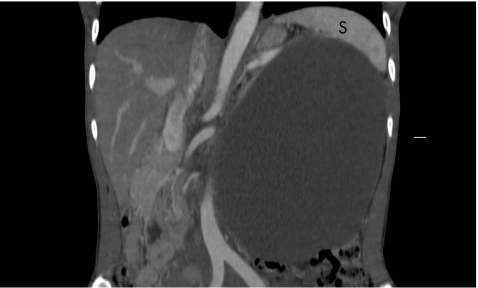T Tsujino
T Tsujino
1T Tsujino, H Kogure, N Sasahira, H Isayama, M Tada, T Kawabe, M Omata, Department of Gastroenterology, Faculty of Medicine, University of Tokyo, Japan
2M Akahane, Department of Radiology, Faculty of Medicine, University of Tokyo, Japan
3K Sano, M Makuuchi, Department of Surgery, Faculty of Medicine, University of Tokyo, Japan
1,2,3,
H Kogure
H Kogure
1T Tsujino, H Kogure, N Sasahira, H Isayama, M Tada, T Kawabe, M Omata, Department of Gastroenterology, Faculty of Medicine, University of Tokyo, Japan
2M Akahane, Department of Radiology, Faculty of Medicine, University of Tokyo, Japan
3K Sano, M Makuuchi, Department of Surgery, Faculty of Medicine, University of Tokyo, Japan
1,2,3,
N Sasahira
N Sasahira
1T Tsujino, H Kogure, N Sasahira, H Isayama, M Tada, T Kawabe, M Omata, Department of Gastroenterology, Faculty of Medicine, University of Tokyo, Japan
2M Akahane, Department of Radiology, Faculty of Medicine, University of Tokyo, Japan
3K Sano, M Makuuchi, Department of Surgery, Faculty of Medicine, University of Tokyo, Japan
1,2,3,
H Isayama
H Isayama
1T Tsujino, H Kogure, N Sasahira, H Isayama, M Tada, T Kawabe, M Omata, Department of Gastroenterology, Faculty of Medicine, University of Tokyo, Japan
2M Akahane, Department of Radiology, Faculty of Medicine, University of Tokyo, Japan
3K Sano, M Makuuchi, Department of Surgery, Faculty of Medicine, University of Tokyo, Japan
1,2,3,
M Tada
M Tada
1T Tsujino, H Kogure, N Sasahira, H Isayama, M Tada, T Kawabe, M Omata, Department of Gastroenterology, Faculty of Medicine, University of Tokyo, Japan
2M Akahane, Department of Radiology, Faculty of Medicine, University of Tokyo, Japan
3K Sano, M Makuuchi, Department of Surgery, Faculty of Medicine, University of Tokyo, Japan
1,2,3,
T Kawabe
T Kawabe
1T Tsujino, H Kogure, N Sasahira, H Isayama, M Tada, T Kawabe, M Omata, Department of Gastroenterology, Faculty of Medicine, University of Tokyo, Japan
2M Akahane, Department of Radiology, Faculty of Medicine, University of Tokyo, Japan
3K Sano, M Makuuchi, Department of Surgery, Faculty of Medicine, University of Tokyo, Japan
1,2,3,
M Omata
M Omata
1T Tsujino, H Kogure, N Sasahira, H Isayama, M Tada, T Kawabe, M Omata, Department of Gastroenterology, Faculty of Medicine, University of Tokyo, Japan
2M Akahane, Department of Radiology, Faculty of Medicine, University of Tokyo, Japan
3K Sano, M Makuuchi, Department of Surgery, Faculty of Medicine, University of Tokyo, Japan
1,2,3,
M Akahane
M Akahane
1T Tsujino, H Kogure, N Sasahira, H Isayama, M Tada, T Kawabe, M Omata, Department of Gastroenterology, Faculty of Medicine, University of Tokyo, Japan
2M Akahane, Department of Radiology, Faculty of Medicine, University of Tokyo, Japan
3K Sano, M Makuuchi, Department of Surgery, Faculty of Medicine, University of Tokyo, Japan
1,2,3,
K Sano
K Sano
1T Tsujino, H Kogure, N Sasahira, H Isayama, M Tada, T Kawabe, M Omata, Department of Gastroenterology, Faculty of Medicine, University of Tokyo, Japan
2M Akahane, Department of Radiology, Faculty of Medicine, University of Tokyo, Japan
3K Sano, M Makuuchi, Department of Surgery, Faculty of Medicine, University of Tokyo, Japan
1,2,3,
M Makuuchi
M Makuuchi
1T Tsujino, H Kogure, N Sasahira, H Isayama, M Tada, T Kawabe, M Omata, Department of Gastroenterology, Faculty of Medicine, University of Tokyo, Japan
2M Akahane, Department of Radiology, Faculty of Medicine, University of Tokyo, Japan
3K Sano, M Makuuchi, Department of Surgery, Faculty of Medicine, University of Tokyo, Japan
1,2,3





